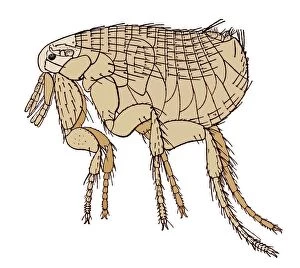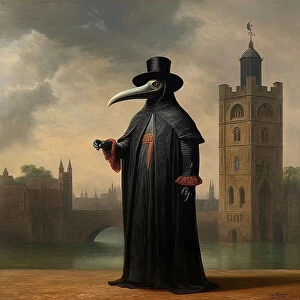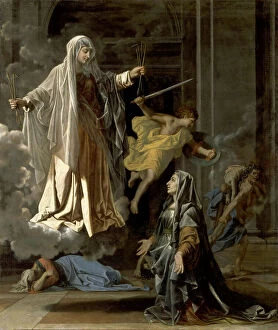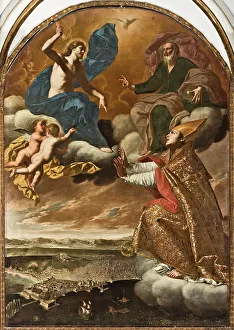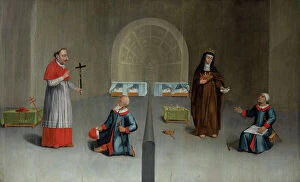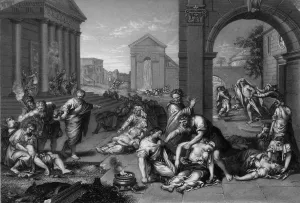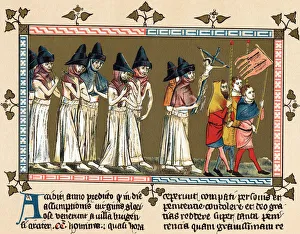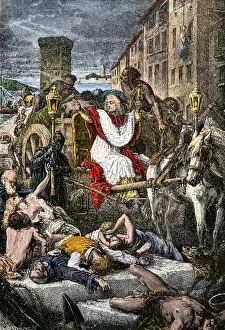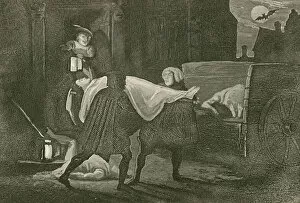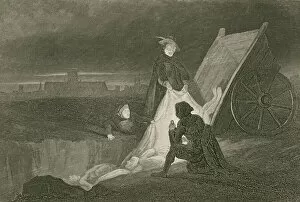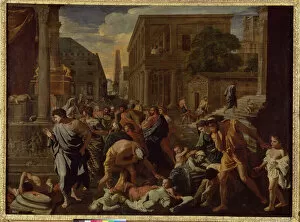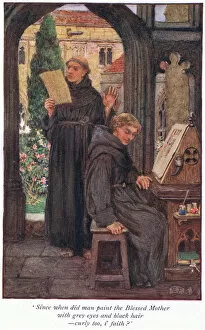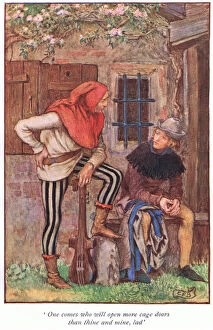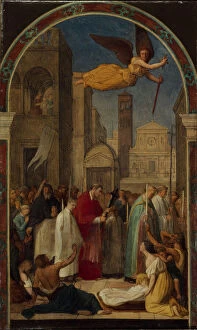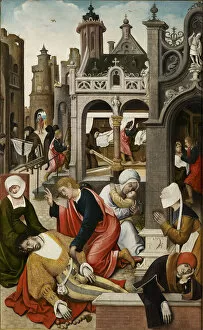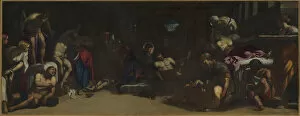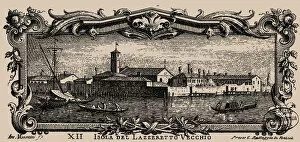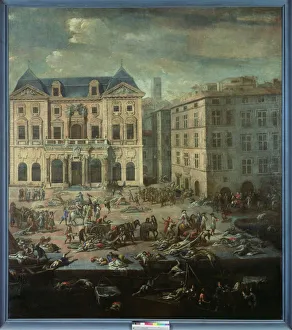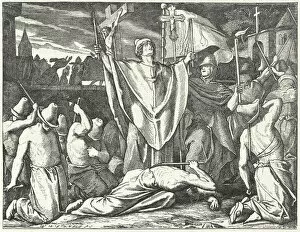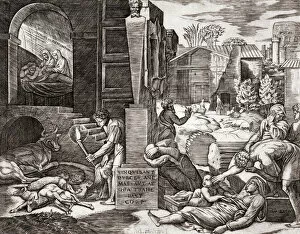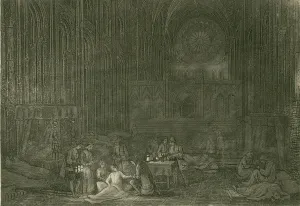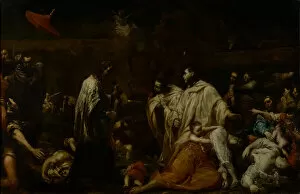Black Death Collection
"Unveiling the Dark Era: The Black Death and its Terrifying Legacy" In the 18th century, a haunting figure emerged known as the Plague Doctor
All Professionally Made to Order for Quick Shipping
"Unveiling the Dark Era: The Black Death and its Terrifying Legacy" In the 18th century, a haunting figure emerged known as the Plague Doctor. With their beaked masks and long cloaks, they navigated through the horrors of disease that plagued Europe. A coloured TEM image reveals the sinister Yersinia pestis bacteria responsible for spreading this devastating epidemic. It was during this time in France when another Plague Doctor fought tirelessly to save lives amidst chaos. Artwork depicting a Black Death rat flea serves as a chilling reminder of how these tiny creatures carried death on their backs, leading to countless deaths during the 16th century epidemic. The words "So the Lord sent a pestilence upon Israel" by Peter Lightfoot echo through history, capturing the despair felt during an outbreak in 1841. Flagellants became symbols of religious fervor and desperation in times of crisis. In 1493, they sought redemption through self-flagellation while battling against the wrath of plague. Centuries earlier, in Tournai (Doornik), Netherlands, flagellants gathered together in 1349 to repent for sins and beg for mercy from God amidst one of history's deadliest pandemics. France faced its own battle with bubonic plague—a relentless adversary that claimed numerous lives throughout history. Its impact left scars on communities forever changed by loss and suffering. Yet amid darkness, stories emerge like rays of hope. London witnessed acts of heroism during its Great Plague in 1665 when brave individuals rescued others from certain death at their own perilous risk. A copy from Aegidius Li Muisis' Chronicle showcases Flagellants at Doornik (1349). This miniature painting captures both fear and faith intertwined within medieval society grappling with unimaginable devastation.




